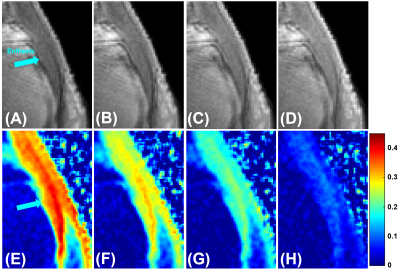Sunrise Session
Emerging Clinical Applications in Musculoskeletal MR Imaging:
Imaging of Tendinopathy
Session Topic: Emerging Clinical Applications in Musculoskeletal MRI Q&A
Session Sub-Topic: Emerging Clinical Applications in Musculoskeletal MR Imaging: Imaging of Tendinopathy
Sunrise Session
ORGANIZERS: Riccardo Lattanzi, Kimberly Amrami, Jung-Ah Choi, Jan Fritz, Miika Nieminen, Hiroshi Yoshioka
| Thursday Parallel 1 Live Q&A | Thursday, 13 August 2020, 15:50 - 16:35 UTC | Moderators: |
Skill Level: Intermediate to Advanced
Session Number: S-Th-06
Overview
This course will introduce technical and clinical aspects of advanced topics in musculoskeletal MR, including whole-body MRI, MRI of neuromuscular disease, advanced MR imaging of tendinopathy, and MRI for osteoarthritis. The course emphasis will be on incorporating advanced imaging techniques for these applications in relevant clinical settings.
Target Audience
The target audience is radiologists and imaging scientists with specialty expertise in musculoskeletal imaging who are interested in incorporating advanced techniques into clinical practice and research.
Educational Objectives
As a result of attending this course, participants should be able to:
- Describe the application of techniques and applications for WBMRI with diffusion at 1.5 and 3T;
- Identify clinical applications and opportunities for the use of WBMRI;
- Name and apply techniques such as ultrashort TE for advanced imaging of tendinopathy;
- Apply quantitative imaging for MRI of osteoarthritis for improved value and diagnostic accuracy;
- List the applications of MRI for evaluating neuromuscular disease; and
- Explain the use of non-proton imaging techniques such as phosphorus and sodium imaging and spectroscopy for neuromuscular dieases.
 |
Quantitative Ultrashort Echo Time MR Imaging of Tendon
Yajun Ma, Eric Chang, Graeme Bydder, Jiang Du
In the human body, tendons perform the function of transferring force from muscle to bone in order to execute movements. Tendons typically have short apparent transverse relaxation times (T2) and show little or no signal with conventional clinical pulse sequences. UTE sequences allow us to directly image and quantify the clinically “MR invisible” tendons and its enthesis. This presentation aimed to investigate the MR morphology of tendons and entheses, then assess their MR properties, including T2*, T1, T1rho, magnetization transfer ratio and magnetization transfer modeling of parameters characterizing the water and macromolecular proton fractions of tissue using UTE sequences.
|
|
| MR Imaging of Tendinopathy: Clinical
Edwin Oei, Stephan Breda
In this lecture, the pathophysiology of tendon overuse injuries will be discussed from a clinical and radiological perspective. The role of imaging in tendinopathy and limitations of conventional MRI will be cornerstones in this presentation. Implementations of quantitative ultra-short echo time (UTE) MRI will be presented in the context of a trial investigating patellar tendinopathy in jumping athletes.
|

 Back to Program-at-a-Glance
Back to Program-at-a-Glance Watch the Video
Watch the Video Back to Top
Back to Top